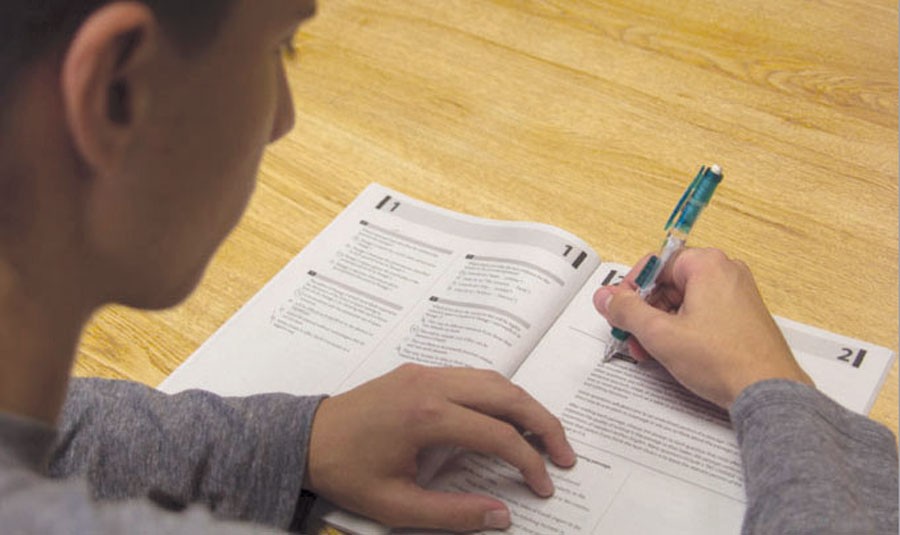Students react to redesigned SAT and its changes
Working on a practice SAT packet, junior Santiago Trejo prepares for the real test.
“Clairvoyant,” “ephemeral” and “fraught” are some words that junior Katie Lane may never come across outside the SAT test. However, changes will take place for the
SAT in March 2016. One of the alterations is the elimination of vocabulary words without context and the addition of more famous documents.
“I know I’ll be focusing on less on vocab because they’re doing it more in context than just ‘oh, do you know this specific word that you would never use?'” Lane said.
Junior Jaja Wang believes that changes will benefit the students who are taking the exam.
“I do like the changes because I think they do try to make an effort to make it more appropriate towards he school curriculum,” Wang said.
In addition to the context with the vocabulary, the test will give the students no penalty for the answers they get wrong.
As a result, Wang predicts “… people will be more comfortable with answering questions,” Wang said. “The scores should go up.”
Scores for the new test will vary depending on the way students think according to gifted education teacher Larry Wolf.
“The changes will decrease the value of simply being a logical thinker and able to figure things out, but they will increase the importance given to knowing your mathematical formulas and how to apply them,” Wolf said.
The math section as well will change to have a calculator and no calculator section. The test will also have an emphasis on graphs and charts based questions.
“Math is more based on graphs and charts,” Wang said. “They [College Board] give real world examples with calculator and no calculator sections instead of just logic problems.”
Despite the change, Wang believes his preparation for the exam will not drastically change.
“I don’t really think it will change my prep,” Wang said. “I think the only key to success is to practice, so as long as I keep practicing I know I’ll get better.”










